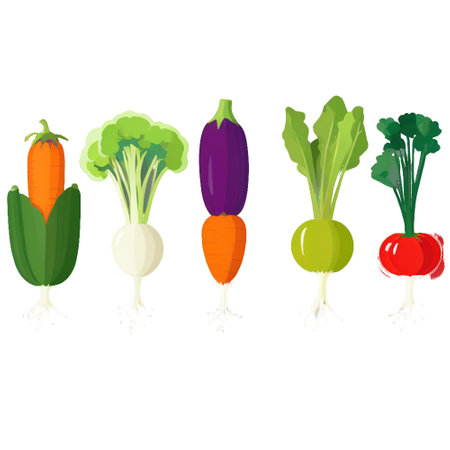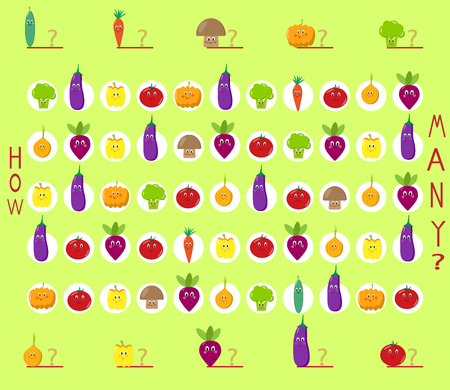Introduction to Square Foot Gardening in the UK
Square Foot Gardening is a highly efficient and accessible method of growing food that has gained popularity among British gardeners seeking to maximise yields from limited outdoor spaces. Originally devised by American author Mel Bartholomew in the 1980s, this innovative approach involves dividing growing areas into small, manageable square-foot sections. Each section can be dedicated to different crops, allowing for greater plant diversity and easier maintenance. In the context of the UK, where urban living and compact gardens are increasingly common, square foot gardening offers an ideal solution. It aligns perfectly with the British appreciation for neatness, orderliness, and sustainability, while accommodating the unpredictable weather conditions typical of these isles. Whether you have a modest terrace, a shared allotment, or just a few spare metres in your back garden, this method empowers individuals and families to grow their own produce efficiently and enjoyably.
Planning Your Compact Plot
Designing a square foot garden for small British spaces—be it a city garden, balcony, or allotment—requires strategic planning to make the most of every inch. Here’s a step-by-step approach to ensure your compact plot is productive and fits seamlessly into its UK setting.
Step 1: Assess Your Space
Begin by measuring your available area. Whether you have a tiny patio in Manchester or a narrow balcony in London, knowing your dimensions is crucial. Consider sunlight exposure throughout the day, as many vegetables need at least 6 hours of direct sun.
Step 2: Choose Your Structure
Opt for raised beds or sturdy containers suitable for the British climate. Timber is a popular choice, but recycled plastic planters are durable and weather-resistant. For balconies, lightweight troughs or modular boxes work well.
Step 3: Mark Out Your Grid
The essence of square foot gardening lies in its grid system. Typically, a bed measures 4ft x 4ft (1.2m x 1.2m), but adapt to your space accordingly. Divide the plot using string, wooden laths, or bamboo canes to create individual squares—each one foot by one foot (30cm x 30cm).
Typical Square Foot Layout Options
| Area Available | Recommended Bed Size | No. of Squares | Ideal Use Case |
|---|---|---|---|
| Balcony (1m x 0.6m) | 2ft x 4ft | 8 squares | Herbs, salad crops |
| Cottage Garden (1.2m x 1.2m) | 4ft x 4ft | 16 squares | Mixed vegetables |
| Allotment Corner (0.9m x 1.5m) | 3ft x 5ft | 15 squares | Root veg & greens |
Step 4: Select Soil and Compost Mix
Fill your beds with a blend suitable for the UK’s variable weather—a mix of peat-free compost, topsoil, and horticultural grit ensures good drainage and nutrition. Aim for at least 15cm depth for root development.
Step 5: Plan Crop Placement Strategically
Certain crops thrive better together and some require more space per square. Map out what goes where based on plant size and growth habit, referring to trusted UK planting guides for sowing times and recommended spacings.
Crops per Square Foot Example:
| Crop Type | No. per Square |
|---|---|
| Lettuce/Salad Leaves | 4-6 plants |
| Carrots/Spring Onions | 16 seeds/plants |
| Tenderstem Broccoli | 1 plant |
| Dwarf French Beans | 9 plants |
| Basil/Parsley Chives | 4-6 plants |
Step 6: Incorporate Vertical Elements Where Possible
If you’re tight on ground space, use trellises or mesh against fences or walls for peas, beans, or even strawberries. This maximises yield without encroaching on precious floor area—a must for urban gardeners across the UK.
This careful planning ensures your square foot garden is tailored to Britain’s compact spaces and unpredictable climate, delivering impressive yields in even the smallest plots.

3. Choosing Crops for the British Climate
When it comes to square foot gardening in the UK, selecting the right crops is vital for maximising yields in compact spaces while ensuring success despite unpredictable weather. The British climate is marked by cool summers, mild winters, and frequent rainfall, which means your plant choices should be resilient, quick-maturing, and able to thrive in fluctuating conditions. Below are practical recommendations for vegetables, herbs, and flowers that are perfectly suited for small British gardens.
Vegetables That Excel in UK Conditions
Certain vegetables are particularly well-adapted to Britain’s temperate climate and will offer high productivity per square foot. Leafy greens such as lettuce, spinach, and rocket germinate quickly and can be harvested multiple times throughout the season. Root crops like carrots, beetroot, and spring onions not only save space by growing downwards but also benefit from cooler temperatures. Peas and broad beans are traditional favourites that tolerate chillier springs and provide vertical interest when trained up supports.
Top Tip:
Opt for compact or dwarf varieties where possible—such as ‘Little Gem’ lettuce or bush beans—to make the most of limited space without sacrificing yield.
Herbs for Continuous Harvests
Herbs are a cornerstone of British kitchen gardens and ideal candidates for square foot layouts. Hardy perennials like chives, thyme, mint (best grown in pots to contain its spread), and rosemary can withstand cooler spells and require minimal maintenance. Annuals such as parsley, coriander, and dill are quick to mature and can be sown successively for ongoing harvests. Place fast-growing herbs near the edge of your beds for easy access while cooking.
Flowers That Support Pollinators and Productivity
Incorporating flowers into your square foot garden not only adds colour but also attracts pollinators essential for fruit set in vegetables like courgettes and tomatoes. Marigolds are especially effective at deterring pests and thrive in the UK’s moist soils. Nasturtiums grow rapidly, spill beautifully over bed edges, and their edible leaves add peppery zest to salads. Calendula is another excellent choice for its resilience to rain and ability to flower well into autumn.
Summary Recommendations
For best results in small British spaces, select crops renowned for their adaptability: salad greens, compact beans, root vegetables, hardy herbs, and dual-purpose flowers. These plants not only cope with the UK’s variable weather but also provide a succession of high-yield harvests from limited ground—a core principle of successful square foot gardening.
4. Soil, Compost, and Raised Beds: Best Practices
Creating optimal growing conditions is central to the success of square foot gardening, particularly within the varied climates and soil profiles found across the UK. This section offers practical advice on constructing raised beds, producing nutrient-rich compost, and maintaining soil quality—specifically tailored to British gardens.
Building Raised Beds for British Gardens
Raised beds are highly effective in maximising yields in compact spaces while offering better drainage—a crucial consideration given the often damp UK weather. Use locally sourced timber (such as untreated larch or cedar) for durability and environmental responsibility. A standard depth of 15–20cm (6–8 inches) is sufficient for most vegetables, but deeper beds may be required for root crops like carrots or parsnips.
Recommended Materials for Raised Beds
| Material | Benefits | Considerations |
|---|---|---|
| Larch or Cedar Timber | Long-lasting, naturally rot-resistant | Slightly higher upfront cost |
| Recycled Scaffold Boards | Cost-effective, sustainable | Check for chemical treatments |
| Brick or Stone | Permanent, classic appearance | Labour intensive installation |
| Recycled Plastic Kits | Low maintenance, weatherproof | Aesthetics may not suit all gardens |
Composting: Making Rich Humus from Local Resources
The foundation of productive square foot gardens is rich, well-structured compost. In the UK, abundant autumn leaves, lawn clippings, and kitchen waste can all be utilised. For best results, aim for a balanced mix of ‘greens’ (nitrogen-rich materials such as grass clippings and vegetable scraps) and ‘browns’ (carbon-rich materials like shredded paper and dry leaves). Turn your compost heap regularly to aerate it—this is especially important in wetter regions where compost can become waterlogged.
Common UK Compost Ingredients & Sources
| Ingredient Type | Examples | Local Availability |
|---|---|---|
| Greens (Nitrogen) | Lawn clippings, veg peelings, spent coffee grounds | Bountiful in spring/summer; household waste year-round |
| Browns (Carbon) | Fallen leaves, shredded cardboard/newspaper, straw | Parks/gardens in autumn; packaging all year |
| Additives (Optional) | Crushed eggshells, wood ash (in moderation) | Kitchens; fireplaces/wood stoves in winter |
Maintaining Soil Quality According to Local Conditions
The UK features a patchwork of soil types—clay in the Midlands, sandy soils in East Anglia, chalky ground in the South Downs. Before filling your raised beds, test your existing soil for pH and texture. Amend accordingly: clay soils benefit from added sharp sand and organic matter to improve drainage; sandy soils retain moisture better with extra compost; chalky soils may need additional organic material to buffer alkalinity.
Soil Amendment Recommendations by Region:
| Region/Soil Type | Main Challenge | Suggested Amendment(s) |
|---|---|---|
| Northern England/Scotland – Clay Soils | Poor drainage, compaction | Add sharp sand/grit and ample compost/humus annually |
| Southeast – Sandy Soils | Drought risk, nutrient leaching | Add well-rotted manure or leaf mould to retain moisture and nutrients |
| South Downs – Chalky Soils | High alkalinity limits some crops’ growth | Add rich compost; consider acidifying mulch for ericaceous crops if needed |
| Cornwall/Devon – Loamy Soils* | *Often ideal but can be acidic in spots* | Add lime if pH is low; maintain fertility with regular compost additions |
An annual top-up of homemade or locally sourced compost will keep your square foot garden thriving season after season. By carefully selecting bed materials and understanding local soil nuances, British gardeners can ensure their small spaces yield bountiful harvests with minimal effort.
5. Seasonal Planting and Crop Rotation
To achieve high yields in small British spaces, understanding the rhythm of the local growing season is crucial. Square foot gardening lends itself well to a systematic approach, allowing for efficient use of space throughout the year. By planning your crops with the UK’s distinct seasons in mind, you can ensure a continuous harvest and maintain soil vitality.
Maximising Output Year-Round
The British climate supports a broad range of crops, but careful timing is key. Start by sowing hardy vegetables such as leeks, onions, and brassicas in late winter or early spring under cover. As these mature, you can follow with fast-growing salads or radishes in their place during late spring and summer. This sequential planting—often called succession planting—ensures that each square foot is always productive.
Sequential Planting Strategies
Map out your square foot beds before each season begins. For example, after harvesting early peas in June, you might immediately sow beetroot or dwarf French beans in the same squares. Rotate quick maturing crops like lettuce or spring onions through squares vacated by slower growing vegetables to keep production constant.
Effective Crop Rotation for Healthy Soil
Crop rotation is essential in square foot gardening, even on a small scale. Rotating plant families from one year to the next helps prevent disease build-up and nutrient depletion. A simple three- or four-year rotation plan works well: follow root crops (carrots, parsnips) with legumes (beans, peas), then brassicas (cabbages, kale), finishing with fruiting vegetables (tomatoes, courgettes).
Tips for British Gardeners
- Label each square clearly at planting time to track rotations easily.
- Incorporate green manures like clover or phacelia in empty squares over winter to enrich the soil naturally.
- Adapt your plans based on local microclimates—urban gardens may offer extended growing seasons compared to rural plots.
Summary
By adopting a thoughtful approach to seasonal planting and crop rotation within your square foot garden, you will enjoy robust yields while preserving soil health—perfectly suited for Britain’s compact outdoor spaces.
6. Sustainable Gardening and Wildlife Considerations
Embracing Eco-Friendly Practices in Square Foot Gardens
Implementing square foot gardening in British homes offers an excellent opportunity to adopt sustainable gardening methods. The structured nature of this approach encourages efficient use of resources, minimising waste and reducing the need for synthetic chemicals. By selecting peat-free composts, using organic mulches, and rotating crops within your grid, you can maintain soil health while supporting the environment. These practices are particularly vital in urban and suburban settings, where garden spaces may be limited but can still contribute positively to local ecosystems.
Water Conservation Techniques for Small Spaces
Water efficiency is a key aspect of sustainability, especially with the unpredictable British weather patterns. Installing water butts to harvest rainwater from sheds or greenhouses allows you to irrigate your square foot beds without drawing on mains supply. Mulching with organic matter such as leaf mould or bark chippings helps retain moisture and suppresses weeds, reducing the frequency of watering required. Additionally, grouping plants with similar water needs together within your grid maximises efficiency and ensures each crop receives optimal care.
Supporting Pollinators and Urban Biodiversity
Even in the smallest city gardens or patios, square foot gardening can play a significant role in supporting Britain’s declining pollinator populations. Integrate nectar-rich flowers such as lavender, borage, or nasturtiums within your planting scheme to attract bees, butterflies, and hoverflies. Choose native plant varieties where possible and allow some herbs like chives or thyme to flower for extended pollen sources. Providing a shallow water dish with pebbles gives pollinators a safe drinking spot, while avoiding pesticides protects both beneficial insects and the broader food web.
Creating Wildlife Havens in Compact Spaces
Your square foot garden can also double as a micro-habitat for wildlife. Incorporate small log piles or stone stacks at the edge of your bed to offer shelter for beetles and other invertebrates. Installing a bug hotel or leaving a corner undisturbed creates refuge for solitary bees and ladybirds. Even bird feeders or nesting boxes attached to nearby fences can encourage birds that help control pests naturally.
The Broader Impact: Community and Environmental Benefits
By adopting eco-friendly practices and fostering biodiversity in your square foot garden, you not only enjoy productive harvests but also contribute to a healthier urban environment. Encouraging neighbours to follow suit can amplify these benefits across your community, creating green corridors that support wildlife movement through towns and cities across the UK.
7. Troubleshooting Common Challenges
Addressing Pest Problems in Compact Gardens
Urban and suburban British gardens, especially those using the square foot gardening method, can be hotspots for a variety of pests such as aphids, slugs, and snails. Due to the close proximity of plants, infestations can spread rapidly. To tackle this, employ companion planting—herbs like basil or marigolds naturally deter common invaders. Physical barriers such as copper tape around raised beds can help keep slugs at bay. Additionally, encourage natural predators like birds and ladybirds by including insect hotels or bird feeders in your garden design.
Managing Fungal Diseases in Damp UK Climates
The unpredictable British weather, characterised by frequent rain and high humidity, often leads to fungal issues such as powdery mildew or blight. Effective ventilation is crucial—avoid overcrowding by sticking to recommended plant spacings within each square foot. Water early in the morning to allow foliage to dry throughout the day, and always water the soil directly rather than the leaves. Mulching with organic material can also suppress fungal spores from splashing onto plants during wet spells.
Coping with Unpredictable Weather Patterns
The UKs famously variable climate can bring sudden cold snaps or prolonged wet periods even in summer. For small-space gardeners, cloches and fleece are invaluable for protecting tender crops from unexpected frosts. Raised beds also drain more efficiently during heavy rainfall, reducing the risk of root rot. In times of drought, water retention gels mixed into the compost can help maintain consistent soil moisture without overwatering.
Maximising Success in Limited Spaces
Space constraints mean every inch counts; thus, regular monitoring is essential. Check for early signs of stress or disease and act swiftly to prevent escalation. Rotate crops each season to minimise pest build-up and soil depletion. Finally, consider integrating vertical gardening elements—trellises or wall-mounted planters—to reduce ground-level congestion and improve airflow.
Summary: Proactive Management for Reliable Yields
By embracing these practical solutions tailored to UK conditions—integrating pest deterrents, fostering healthy airflow, adapting to erratic weather, and optimising space—you can overcome common challenges and consistently achieve impressive yields from your square foot garden.

